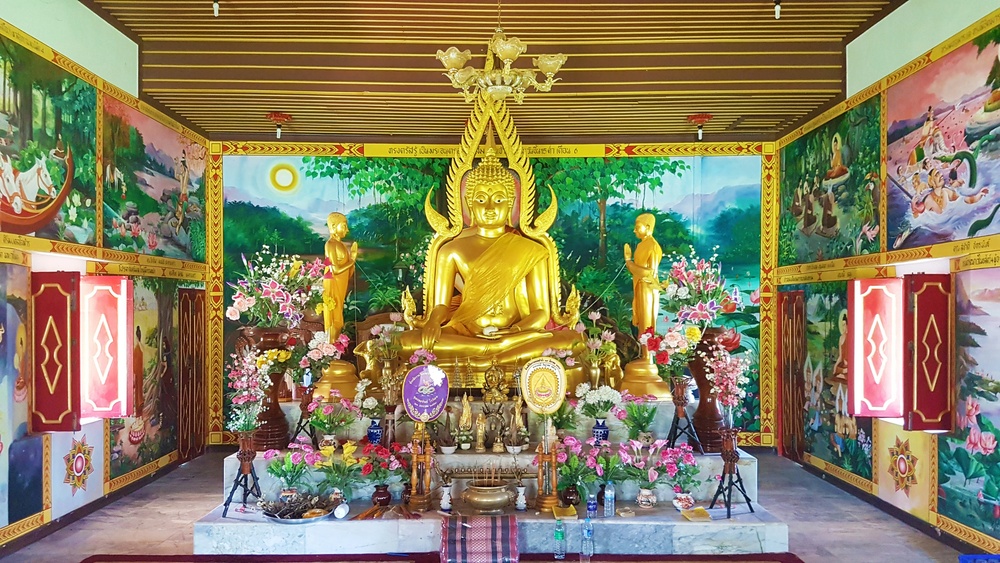In today’s fast-paced world, travellers increasingly seek destinations that offer peace, mindfulness, and deep cultural experiences. Buddhist monasteries in India provide exactly that – a gateway to tranquillity, introspection, and timeless spiritual wisdom. From the Himalayan heights of Ladakh and Sikkim to the tranquil plains of Bihar and Karnataka, these monasteries are perfect for your next spiritual journey. Here’s why.
1. Birthplace of Buddhism
India is where Buddhism originated over 2,500 years ago under the Bodhi Tree in Bodh Gaya. Visiting Buddhist monasteries in India connects you to the very roots of this profound philosophy. The monasteries here carry the authentic lineage of Buddhist teachings, rituals, and monastic life, offering an unmatched spiritual experience for devotees and seekers worldwide.
2. Centres of Peace and Meditation
Buddhist monasteries are built as sanctuaries of peace and meditation. Monks engage in daily chanting, rituals, and meditation practices that create an environment charged with serenity and mindfulness. For travellers seeking mental clarity and inner calm, spending time in monasteries like Rumtek (Sikkim), Hemis (Ladakh), or Namdroling (Karnataka) can be transformative.
3. Architectural Grandeur with Spiritual Depth
The architectural beauty of Buddhist monasteries in India is awe-inspiring. From the fortress-like Key Monastery in Himachal Pradesh to the golden grandeur of Namdroling Monastery in Bylakuppe, each monastery is an artistic masterpiece reflecting Buddhist philosophy through intricate murals, statues, stupas, and prayer halls. Their design embodies harmony with nature, evoking instant peace upon arrival.
4. Immersion in Monastic Life
Many monasteries in India allow travellers to stay within the premises or nearby guesthouses. This offers a rare opportunity to immerse yourself in monastic life – participating in early morning prayers, helping with monastery chores, attending teaching sessions, and learning the art of mindfulness directly from the monks. It’s a life-changing experience that fosters humility, gratitude, and presence.
5. Natural Settings That Heal the Soul
Most Buddhist monasteries in India are located amidst breathtaking natural settings – from high-altitude desert landscapes of Ladakh to misty hills of Sikkim and lush forests of Karnataka. Nature and spirituality go hand in hand here. Whether meditating at Tawang Monastery overlooking the Eastern Himalayas or listening to prayer chants at Rumtek surrounded by pine forests, these places rejuvenate your spirit.
6. Festivals That Enrich Your Journey
Visiting monasteries during their annual festivals is an enriching experience. The Hemis Festival in Ladakh, celebrating Guru Padmasambhava, features vibrant Cham dances, prayers, and cultural displays. Tawang Monastery’s Losar celebrations, Rumtek’s Mahakala Puja, and Mindrolling’s ceremonies in Dehradun open doors to understanding Buddhist traditions and communal harmony.
7. Learning Ancient Wisdom
Buddhist monasteries are not just places of worship but also centres of learning. Monks spend years studying scriptures, philosophy, logic, and meditation. Travellers interested in Buddhist teachings can attend introductory sessions, retreats, or guided meditation classes to understand mindfulness, compassion, and emptiness – the core principles that bring lasting inner peace.
8. Contribution to Global Harmony
Buddhist teachings emphasise non-violence, compassion, and universal brotherhood. Spending time in Buddhist monasteries in India nurtures these values within you, encouraging a life aligned with kindness, patience, and understanding. Such an experience not only enhances personal growth but also inspires contributions towards global harmony and peace.
9. Accessible Yet Immersive
Unlike the isolated monasteries of Tibet or Bhutan, many Buddhist monasteries in India are easily accessible yet maintain their spiritual purity. Monasteries in Sikkim (like Rumtek and Pemayangtse), Karnataka (Namdroling), and even the Ladakh region are traveller-friendly with good connectivity, facilities, and organised retreats for spiritual tourists.
10. A Journey Within
Ultimately, visiting Buddhist monasteries is not just about exploring ancient architecture or rituals. It is about embarking on a journey within yourself. In the silent prayer halls, amidst the chanting monks, or while spinning prayer wheels in these monasteries, you find a deeper connection with your own mind and heart – an experience that stays long after your travels end.
Top Buddhist Monasteries in India for Your Spiritual Journey
Here are some of the must-visit monasteries:
- Tawang Monastery, Arunachal Pradesh – Largest monastery in India with stunning Himalayan views.
- Rumtek Monastery, Sikkim – The seat of Karmapa with vibrant rituals and golden stupas.
- Hemis Monastery, Ladakh – Known for its grand Hemis Festival and rich artefacts.
- Key Monastery, Himachal Pradesh – A 1000-year-old fortress monastery overlooking Spiti Valley.
- Namdroling Monastery, Karnataka – Golden Temple of South India, a serene and beautiful teaching centre.
- Mindrolling Monastery, Dehradun – Featuring the Great Stupa and traditional Nyingma teachings.
Conclusion
If you are seeking your next spiritual journey, there is no better destination than the Buddhist monasteries in India. Their timeless teachings, peaceful ambience, cultural richness, and breathtaking surroundings combine to offer an experience that nourishes both mind and soul. Whether you wish to meditate, learn, or simply absorb the silent wisdom of these sacred spaces, a visit to these monasteries will transform your perception of life and bring you closer to the true essence of peace.


